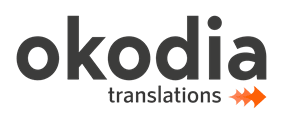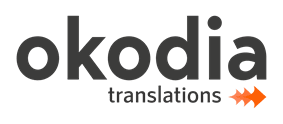If you already have a full website, with good contents, carefully selected images, a nice design, and a well-defined brand, now you should promote it, make it well-known, and obtain a good return from your investment. In one work, now’s the time to position it well. SEO positioning has become a necessity for anyone who runs a business with an online presence. We all want to position our website, receive many visits, for our blog to be read by many – in a few words, we want online visibility. And do you achieve this goal? How can you ensure that your medical website has a good position in the Fifth Avenue of online activity?
- Some history
- What is SEO?
- SEO content
- What exactly is translated?
- Do I need to do international SEO?
- Mistakes in website translation
- Be careful with the changes
- Experts in website translation
- A success story
- Blogs are also important
Some history
Not too many years ago, a new and perilous trend was all the rage on the Internet: embedding a machine translation engine in websites, which—supposedly—quickly and correctly translated all the website’s texts to the language chosen by the user. Do you remember? With just one click, your web environment was left completely unconfigured and unapologetically showed the user an appalling “translation” into Swahili, Korean or Mandarin Chinese.
Fortunately, this habit of attempting to communicate with users across the globe using machine translation quickly fizzled out and had a positive outcome: it gave rise to the idea that the Internet was a global means of communication and that websites—professionals, companies—had found a great ally to export and to internationalize.
Overnight, the infamous icons for machine translation into a thousand and one languages disappeared from the web interface. Most of the websites went back to how they were, displaying their texts in one, two or, at most, three languages, which were spoken by the majority of their current or future customers. The time had come to improve the translations of web environments. SEO translation was thus born.
What international or multilingual SEO is
The word “SEO” is part and parcel of the digital world and most of us know what natural optimization of a website involves so that it can be easily located by the main search engines. We know what “doing SEO” consists in, but not everyone knows what international or multilingual SEO is. It’s important to define the meaning of this term as it’s not advisable to commission a job without knowing exactly what it consists in, right? We’re going to lay this question to rest.
Doing international SEO consists in optimizing the visible and hidden content of a website written and programmed in two or more different languages. This website can be a blog, a webpage, a virtual store, an e-learning environment, etc. There are other activities that can boost international SEO which have nothing to do with content such as reserving international domains like .ru in Russia, .pt in Portugal, .cn in China, etc. In this article, we will focus on our specialty: the translation of content for a website.

SEO content
It’s easy to determine what the visible content of a web environment is: texts, images, etc. that are displayed on the screen of the user accessing that website. There are countless examples of visible content, from the usual texts in the “About Us” section, to blog articles, photo captions, etc.
Now, the hidden content on a website (invisible to human users) is another story. Simply explained, we could say that such hidden content is buried in your site’s code and serves to attract the attention of search engines and get your website to the top of their results lists. This is what experts call “organic positioning”.
Examples of hidden content that must be taken into account when investing in international or multilingual SEO would be the ALT tags of graphic materials (photos, illustrations, etc.), the absolutely essential keywords, SEO titles and descriptions, etc.
So what parts of a website are translated?
As you can see, SEO translation involves far more than just the visible content. For example, it includes the keywords. Once the content has been translated, the next job is to check that the keywords are appropriate for the language you want to use. You should be aware that users can search for your product or service in different ways, so you need to choose the most relevant keywords, these being the ones that appear in the highest volume of searches in each language. Any online marketing agency, in addition to helping with the advertising on the Internet, will give you some hints on how to perform this optimisation. For example, they might explain that the keywords have to appear a certain number of times within a text, depending on its length, and that the titles and descriptions are essential for positioning, as are the links. They might give you ideas on how to position your page and ensure that it has visibility in any language and from anywhere in the world.
Optimisation. In the same way that you have to constantly optimise a website, you have to do this when you translate a website into another language. It is not enough to have a high quality translation with the right keywords, as you also have to optimise elements such as images, descriptions of the text and page titles.
Never forget the metadata for the text. The metadata included in the content, such as the translation of the title, the page description, the URL and the name of the link you are going to use to publicise the page, also need to be translated. Remember that you also have to adapt the internal and external links and translate any tables, graphics and videos.
Do I need to do international SEO?
Before deciding whether to translate the SEO elements of your blog, web environment or virtual store, it’s essential for you to be clear about several points, particularly two: your website’s target audience and your available budget.
1.Your target audience
Your web environment’s type of target audience is the first thing you have to bear in mind when commissioning (or not) an SEO translation, particularly into the language spoken by current or potential users you want to attract to your website. If your target audience mainly speaks Spanish and English, what’s the point of investing money to translate your SEO into German or Chinese? It’s better to invest your budget in improving SEO in two main languages instead of in three, four, five or six.
2.Your budget
As mentioned before, having your website translated by professionals is critical to improve its natural positioning, to get search engines to index its content and for your website to appear among the top results, to avoid getting penalized for duplicate content, etc. In addition, you must have the support of other professionals specializing in web development, online marketing, SEO, etc.
Errors in the SEO translation of a website
One of the worst things you can do is use an automatic translator for the SEO translation of your website. Some tools created by companies such as Google allow the content of the page to be translated immediately with just one click. However, although the texts appear to have been translated, they no doubt contain serious linguistic errors that only a professional translator can avoid. In addition, while you might think that a literal translation is the best option for your website, that is not the case.
A website translation into other languages using automatic translators, whose counter indications and secondary effects have been more than proven, will have a tremendously damaging effect on your medical website’s reputation and seriously harm its health.. You need to bear in mind that SEO positioning requires specific structures and conditions, such as keywords, which can change from one language to another. Therefore, even if the text is clear to its users, it may not be the best option for the translation of the website in terms of its positioning
Besides, you have to get to know the country’s culture a little. Perhaps the way advertising is done in London is very different from how they do it in Stockholm. Maybe some linguistic changes or nuances that you wouldn’t normally use in your native language are called for. For example, in Slavic culture, it is extremely disrespectful to use the informal form of address, which is generally used in Spain when promoting a website.
Be careful with the changes in your website
More often than not, changes are unavoidable. But, be careful, as they can cause some damage to your online reputation. Once you decide to translate your website, the first thing you need to be aware of is that the version of the site will be final. You might have to make some changes in the future, but generally speaking, these will be quite minor. It’s not uncommon for a company to seek a professional translation agency to translate some texts into another language, and after some changes to the website, to let automatic translators do their magic. There was one time when, after translating a website on olive oil into Russian, everything was perfect. But some months later, the company had to make some changes in its profile and it decided to use Google Translate to get the job done. So instead of “oil”, Google’s algorithms decided that the best translation in Russian would be “petroleum”. You can just imagine the confusion that this gave rise to among its customers and the incalculable losses for the company.
Experts in website translation
To begin with, the importance of having a multi-language website cannot be underestimated. The only preventive measure you should take is leaving this task to professionals, such as Okodia because it’s better to prevent than to cure! Forget any idea that web translation can be done using an automatic translator. It can’t.. Stop prioritising the price of the translation or the speed of delivery and instead focus on the positioning factors. If not, the translated content will not be as well positioned as the original content. You need to find experts who know what they are doing. That is why one of the best options is to use the services of a website translation professional who also understands SEO.
In our website translation agency, you can translate your website, for example, into Spanish, English, German, French, Japanese or any other language, considering SEO parameters. Our professional translators make this possible.
A success story
If you like the world of gaming and gambling, you have probably already heard of the Casino Professor. It is one of the few websites written entirely in Spanish that helps to locate the best online casinos. The gaming industry mainly works in other languages, such as English, so it is a bit difficult for Spanish-speaking people who do not know other languages to find these types of websites.
The owners of the business decided to choose Okodia Translation Services as they did not want to limit their business only to Spain and Latin America, instead wanting to do the same as other websites had, namely to expand to other countries, and the only way to do this was through using different languages. In this case German, Finnish and English. These are the three languages they chose on the basis of their business model. These professional translations required a certain urgency because every day that passed without being positioned in those markets meant the company losing money, so at Okodia we got down to work to translate the website. However, it was not just any translation. In this case it required a professional translation targeted at SEO, so the most searched keywords in those languages had to be taken into account to include them in the website translation. All of this has allowed the company to take off internationally.
Blogs, too
A blog, which should also be translated into several languages, is a crucial item to position your medical website these days. It must have interesting, well-written contents. Including links to related posts is also a good idea. In this way, you can also increase the number of visits to your website, as visitors can be redirected to the contents in your website.
When we talk about keywords, tools like Google Adwords can help to find which words are usually entered by users in their searches and, even though you will find that they often pitilessly mistreat the dictionary, you can use these terms – properly spelt and in the right context – in your blog posts.
These may be very basic tips, but we would like to make it clear that it is important to take care with language in all these actions. To this end, we can prescribe a course of good translations, proper spelling, and high-quality texts. Together, they constitute an infallible vitamin complex that will certainly strengthen your website.
As you can see, there is a lot of work involved in translating SEO. It requires a professional translator who has an in-depth understanding not only of the language, but also the culture, the expressions and even the spelling mistakes that users can make when searching.













